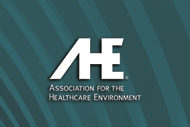Environmental services (ES) departments may not always be thought of as revenue-producing entities but, according to Todd Wilkening, CEO of FMadvantage LLC, there are ways ES managers can contribute to the bottom line outside of cost-saving measures.
Waste, Wilkening says, should be thought of as a commodity rather than a stream with no value. According to our 2015 Sustainable Operations Survey, cardboard, batteries, paper, beverage containers and metal are the top five materials health care facilities recycle, all of which have the potential to be turned for a profit.
“Waste-and-recycling haulers are receiving large amounts of money from reselling recyclables,” he says. “Items such as cardboard, pallets, paper, glass, tin, cans and X-ray films can bring in money. For example, 50 tons of recyclables at a combined value of 5 cents per pound yields $5,000 in revenue.”
Whether the main motivation for recycling is a monetary one or some other benefit, hospitals can use a simple guide to check off seven steps to develop or improve upon their recycling programs. One of those steps is to establish the recycling program’s goals with the help of an environmental or sustainability community.
Providence Health & Services, serving Oregon and Southwest Washington, has integrated sustainability into its mission as a way to help not only the world, but also to have a direct impact on its immediate community.
Providence says it has diverted an estimated 3,000 tons from landfills over the past five years and it’s done so working alongside a sheltered workshop program that employs persons with developmental disabilities. Each weekday, Providence employs 10 people who sort through an average of 5,700 pounds of commingled materials that are separated into different streams for shipment and sale to local recycling vendors.





